George Warren
George Warren
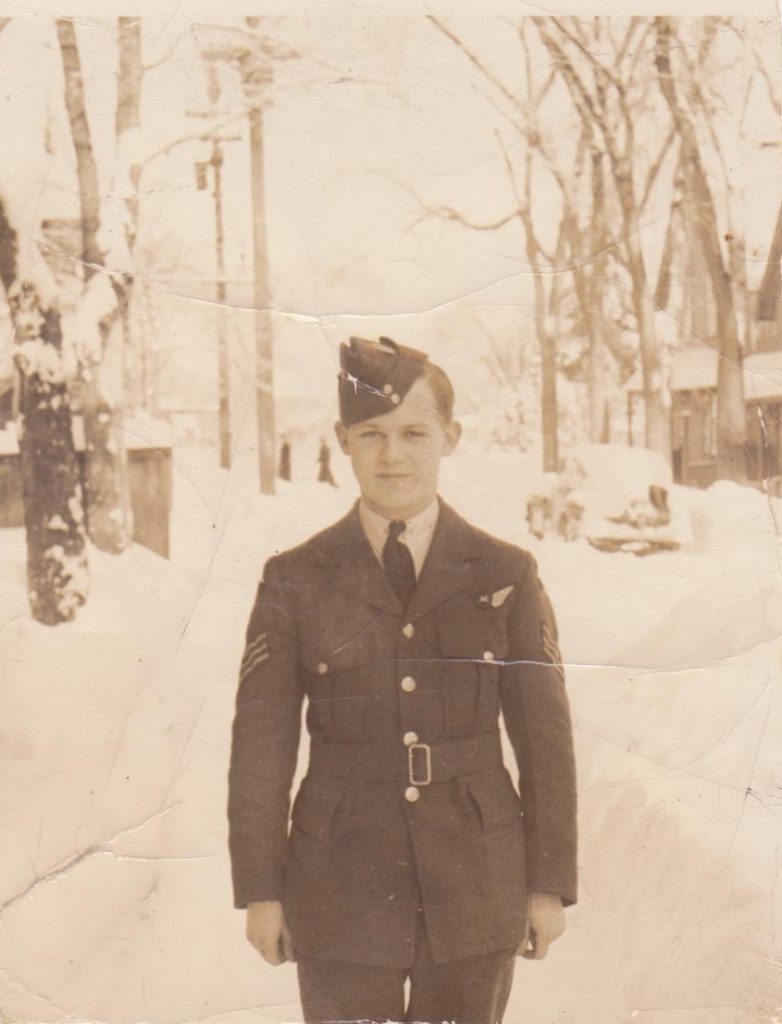
George Warren, Halifax JD368 ZA-A, est mort la même nuit du 27/28 août 1943 et il avait la même mission. Voici son histoire et celle de son équipage… Par Geoff Warren, neveu de George Warren
George Warren, Halifax JD368 ZA-A, died the same night of 27/28 August 1943 and had the same mission. Here is his story and that of his crew… By Geoff Warren, George Warren’s nephew.
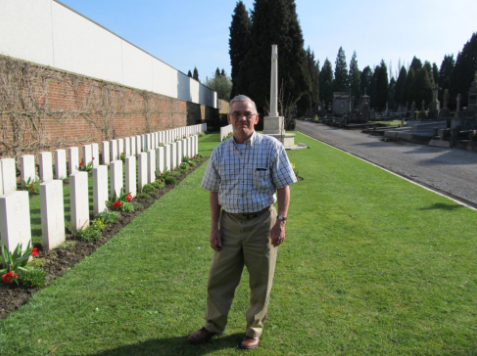
Geoff Warren (auteur de l’histoire du JD368, Author of JD368 Story) Neveu de George – George’s nephew
La Chute du Halifax JD368 / ZA-A The Downing of Halifax JD368 / ZA-A 10 Squadron, RAF Melbourne, Yorkshire.
A la mémoire du F/Sgt. George Richard Marr WARREN, RACF.
In Memory of F/Sgt. George Richard Marr WARREN, RCAF.
Le vendredi 27 août 1943 à 20h49, le Handley Page Halifax (MKII), JD368/ZA-A du 10ème escadron, 4ème Group Bomber Command, décolle de l’aéroport de Melbourne dans le Yorkshire en Angleterre pour des opérations sur Nuremberg en Allemagne.
On Friday, 27 August, 1943, at 2049hrs, Handley Page Halifax (Mk II), JD368/ZA-A, of 10 Squadron, 4 Group Bomber Command, took off from RAF Melbourne, Yorkshire, England, for Operations over Nuremberg, Germany.
Samedi matin, 28 août 1943, à environ 2h30, alors qu’il retournait en Angleterre après avoir lâché ses bombes sur la cible, le JD368, en feu, s’est écrasé près de Haulchin en Belgique à environ 12Km au sud de Mons. Il a été attaqué par un chasseur de nuit de la Luftwaffe à l’est du site du crash.
Early Saturday morning, 28 August, 1943, about 0230hrs, while returning to England after dropping their bomb load over the target, JD368 crashed to the ground in flames near Haulchin, Belgium, about 12km south of Mons. She had been successfully attacked by a Luftwaffe night-fighter some distance east of the JD368 crash site.
Sept des 8 membres de l’équipage ont sauté en parachute avec succès, mais un a été tué durant l’attaque. L’homme qui est décédé était le Flying Sergeant George R.M. Warren de la Royal Canadian Air Force, le mitrailleur, âgé de 19 ans, provenait d’Ottawa en Ontario, Canada. Son corps a été retrouvé dans la carcasse du JD368 et George a été enterré avec tous les honneurs militaires par les autorités allemandes au cimetière communal de Gosselies en Belgique.
Seven of the eight crewmembers successfully baled out of the burning JD368, but one was killed during the night fighter attack. The man who died was F/Sgt. George R.M. Warren, Royal Canadian Air Force, the 19 year old rear-gunner from Ottawa, Ontario, Canada. His body was recovered from the wreckage of JD368 and George was buried with full military honours by German authorities at Gosselies Communal Cemetery, Belgium.
JD368 Crew – Baker (P), Cornelius (2nd P), Davies (N), Pearce (BA), Lawrence (WO), McCallum (E), Darvill (G), Warren (G)
Equipage du JD368-Baker (Pilote), Cornelius (2ème Pilote), Davies (Navigateur), Pearce (Bombardier), Lawrence ( Opérateur radio), McCallum (mécanicien) Darvill (Mitrailleur), Warren (mitrailleur)

JD368 Crash Site with German Guards (Estinnes-au-Mont Church Steeple – Upper Left Corner)
JD368 Operation To Nuremberg – 27/28 August 1943
Rear Gunner
George Richard Marr « Junior » WARREN

Flt. Sgt. RCAF #R/152436
Born: Dec.23, 1923, Ottawa, Ontario, Canada
Né le 23 décembre 1923, Ottawa, Ontario, Canada
Died: Saturday 28 August 1943, 0230hrs, (Age 19) over Haulchin/Estinnes, Belgium
Décédé le samedi 28 août 1943 à 2h30, âgé de 19 ans au-dessus de Haulchin/Estinnes en Belgique.
Buried Gosselies Communal Cemetery, Charleroi, Hainaut, Belgium
Enterré au cimetière communal de Gosselies, Hainaut, Belgique
Son of: Ernest Richard WARREN and Florence Isobel (MARR) WARREN of Ottawa, Ontario, Canada.
Fils de Ernest Richard WARREN et de Florence Isobel (MARR) WARREN de Ottawa, Ontario, Canada
When WW2 broke out in 1939, George was a 16 year old school student living with his mother and father in Ottawa, Ontario. Although he wanted to join the Royal Canadian Air Force (RCAF) to become a pilot, the minimum enlistment age for the RCAF was 18, so George had to wait.
Lorsque la 2ème guerre mondiale a éclaté en 1939, George était un étudiant, âgé de 16 ans, vivant avec sa mère et son père, à Ottawa, en Ontario. Alors qu’il voulait rejoindre l’Aviation royale du Canada (ARC) pour devenir pilote, l’âge minimum d’enrôlement pour l’ARC avait 18 ans, George dut attendre.

He worked hard to improve his school marks, graduated High School, and by late 1941 he was finally able to enlist and after postings to RCAF schools in Ontario, he completed his basic training courses.
Il a travaillé Beaucoup pour améliorer ses résultats scolaires, diplômé des études secondaires, et la fin 1941, il a finalement réussi à enrôler et après ses affectations dans les écoles de l’ARC de l’Ontario, il a terminé ses cours de formation de base.

By 24 August 1942, he was enrolled in Course #62, #20 Elementary Flying Training School (EFTS) at Oshawa, Ontario; just east of Toronto. The RCAF EFTS schools were operated using the model of the British Commonwealth Air Training Plan (BCATP), but using civilian flight instructors from local, private flying schools.
Le 24 Août 1942, il s’était inscrit au cours n ° 62, Ecole élémentaire de pilotage n°20 (EFTS) à Oshawa, en Ontario, juste à l’est de Toronto. Les écoles ARC EFTS ont suivi le modèle du Plan d’entraînement aérien du Commonwealth (PEACB), mais en utilisant les instructeurs locaux de vol civils venant d’écoles de pilotage privées.

Taking their first basic flying training using Tiger Moth aircraft, the EFTS students were taught the elementary skills of piloting a single engine aircraft. George took his Tiger Moth flight training during the months of August and September 1942 but, like so many other pilot trainees, his flying skills were not up to RCAF standards and he was not accepted for further flight training.
Prenant leur première formation de base en vol à l’aide de l’avion Tiger Moth, on les étudiants EFTS a enseigné aux étudiants les connaissances élémentaires de pilotage d’un avion monomoteur. George a suivi sa formation sur le Tiger Moth pendant les mois d’Août et Septembre 1942, mais, comme beaucoup d’autres élèves-pilotes, ses compétences de vol n’étaient pas conformes aux normes de l’ARC et il n’a pas été accepté pour la formation vol ultérieur.
The RCAF decided that as George was not suitable to be a pilot, and his schooling and previous experience did not qualify him to become a navigator, radio operator or bomb-aimer, he would therefore be trained as an air-gunner. George was posted to the BCATP gunnery school near Hamilton, Ontario, where he qualified and received his RCAF Air-Gunner Wing insignia.
L’ARC a décidé que George n’était pas apte à être un pilote, et sa scolarité et son expérience précédente ne lui permettent pas de devenir un opérateur radio navigateur ou bombardier, il sera donc formé comme un air-mitrailleur. George a été affecté à l’école d’artillerie PEACB près de Hamilton, en Ontario, où il s’est qualifié et a reçu ses insignes de l’ARC-mitrailleur.

By early 1943 George had finished his air gunner training in Canada and was on his way to England by troop ship to undertake further training with the Royal Air Force.
Début 1943 George termina s formation de mitrailleur au Canada et alla en Angleterre pour entreprendre une formation complémentaire avec la Royal Air Force.
Completing his Heavy Conversion Unit (2 engine to 4 engine) training, he was posted to 24 Operational Training Unit at RAF Long Marston where the 7 member Baker crew came together as a team on 30 April 1943.
Au terme de sa formation dans une unité de Heavy Conversion (passage de 2 moteurs à 4 moteurs), il a été affecté à 24 Operational Training Unit de la RAF à Long Marston où les 7 membres d’équipage Baker se sont réunis en équipe le 30 Avril 1943.
Additional Baker crew training took place at 1663 Conversion Unit, RAF Rufforth, before they were posted to 10 Squadron, RAF Melbourne, Yorkshire, on 9 July 1943, and began flying together in JD368/ZA-A.
Une formation supplémentaire de l’équipage de Baker a eu lieu à « 1663 Conversion Unit, RAF » à Rufforth, avant qu’ils ne soient affectés au 10e Escadron de la RAF à Melbourne, dans le Yorkshire, le 9 Juillet 1943, et qu’ils commencent à voler ensemble dans le JD368/ZA-A.
Even many months after the crash of JD368, George’s family in Canada did not know whether he was dead or alive. A relative of the Warren family in London, England, a Mr. Clow, was able to correspond with the former pilot of JD368, George Baker, who by that time had returned to England from his evasion adventures through occupied Europe and had converted to Lancasters with 101 Squadron, RAF.
Même plusieurs mois après le crash du JD368, la famille de George au Canada ne savais pas s’il était mort ou vivant. Un parent de la famille Warren à Londres, en Angleterre, M. Clow, a été en mesure de correspondre avec l’ancien pilote de JD368, George Baker, qui à ce moment était de retour en Angleterre de ses aventures à travers l’Europe occupée et qui s’était converti au Lancaster avec 101 Squadron de la RAF.
Mr. Clow wrote to Baker seeking information about George’s fate after the crash and (now Pilot Officer) Baker wrote back the following letter, dated 26 March 1944, from the Officers Mess at RAF Ludford Magna, the home base of 101 Squadron:
Clow a écrit à Baker pour obtenir des informations sur le sort de George après l’accident et (maintenant lieutenant d’aviation) Baker a répondu la lettre suivante, en date du 26 Mars 1944, du mess des officiers de la RAF Ludford Magna, la base de départ de 101ème Squadron: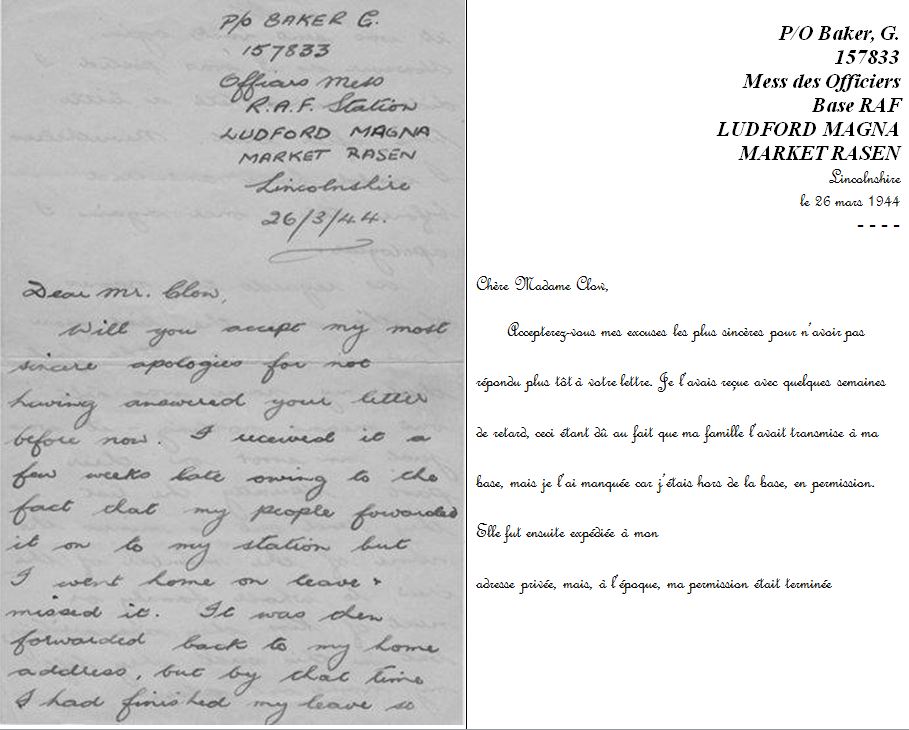

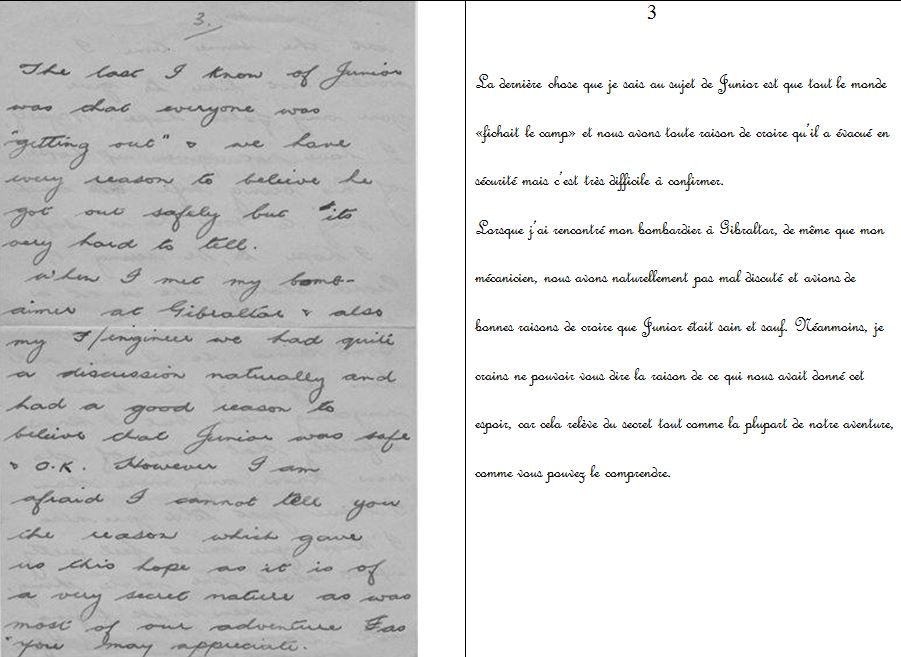
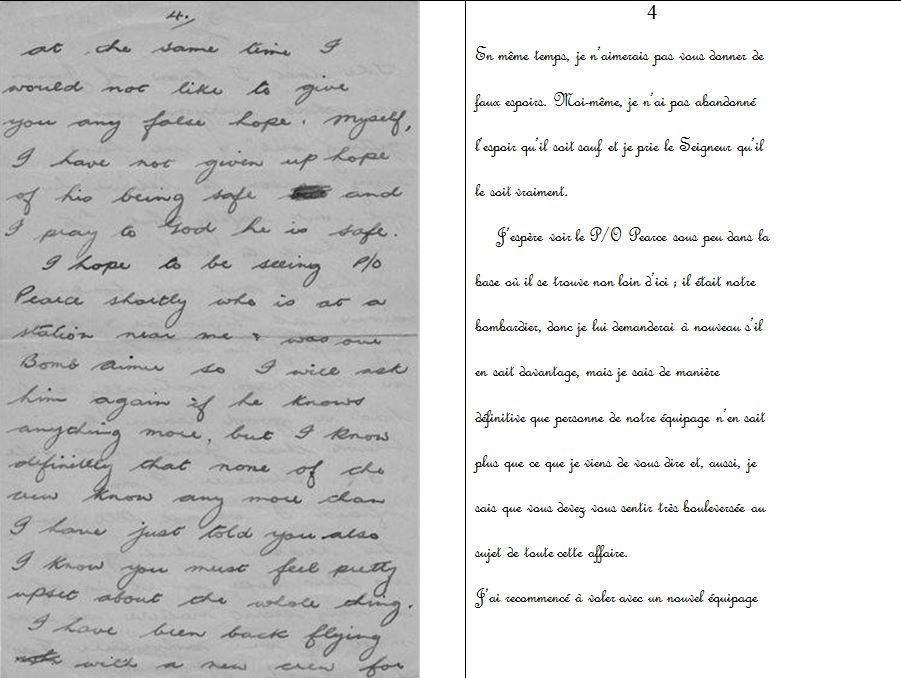
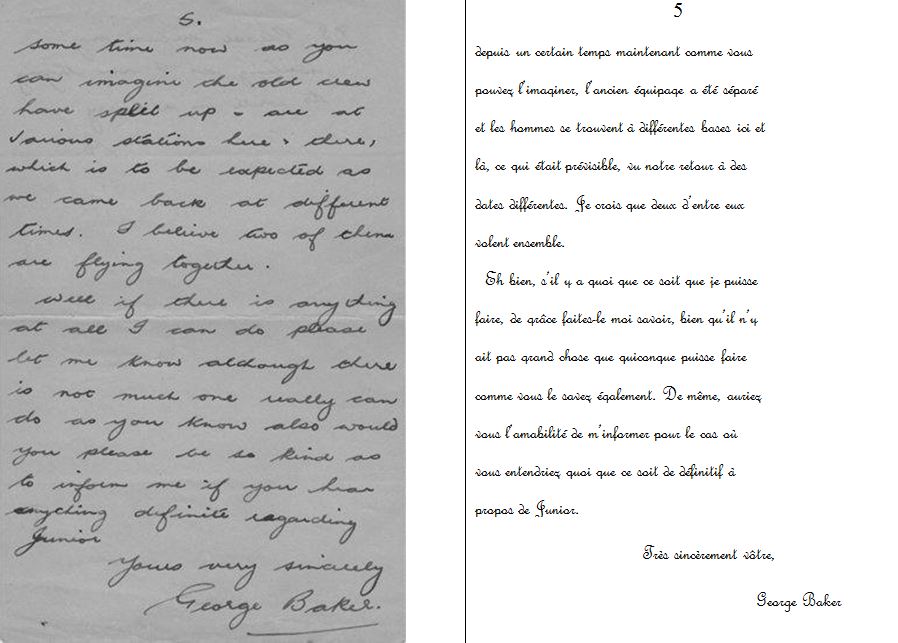
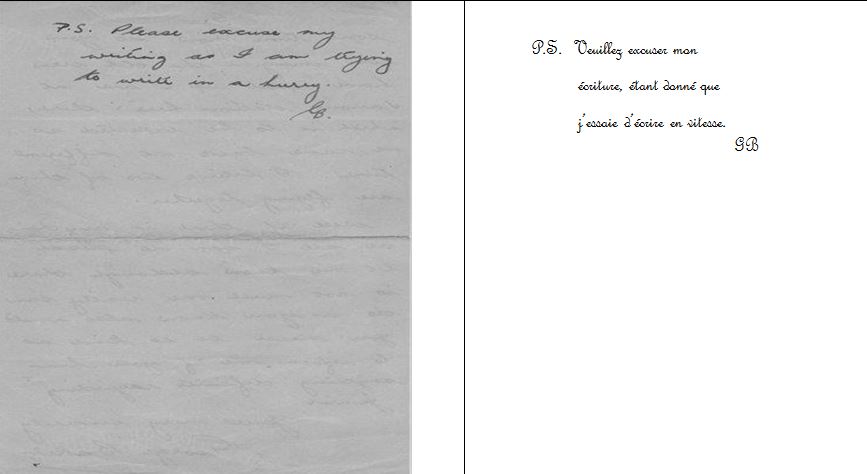
Six weeks after he wrote to Mr. Clow in London about the possible fate of « Junior » Warren, George Baker and his 101 Squadron Lancaster crew were all dead and buried at Poivres, France, after their Operation to Mailly-le-Camp.
Six semaines après avoir écrit à M. Clow à Londres sur le sort possible de « Junior » Warren, George Baker et son équipage du 101ème Escadron de Lancaster étaient tous morts et enterrés à Poivres, en France, après leur opération à Mailly-le-Camp.
It was not until 22 July 1944 that George’s mother and father were officially notified by the RCAF of his death and burial at Gosselies, Belgium.
Ce n’est que le 22 Juillet 1944 que la mère et le père de George ont été officiellement avertis par l’ARC de sa mort et de son enterrement à Gosselies, Belgique.
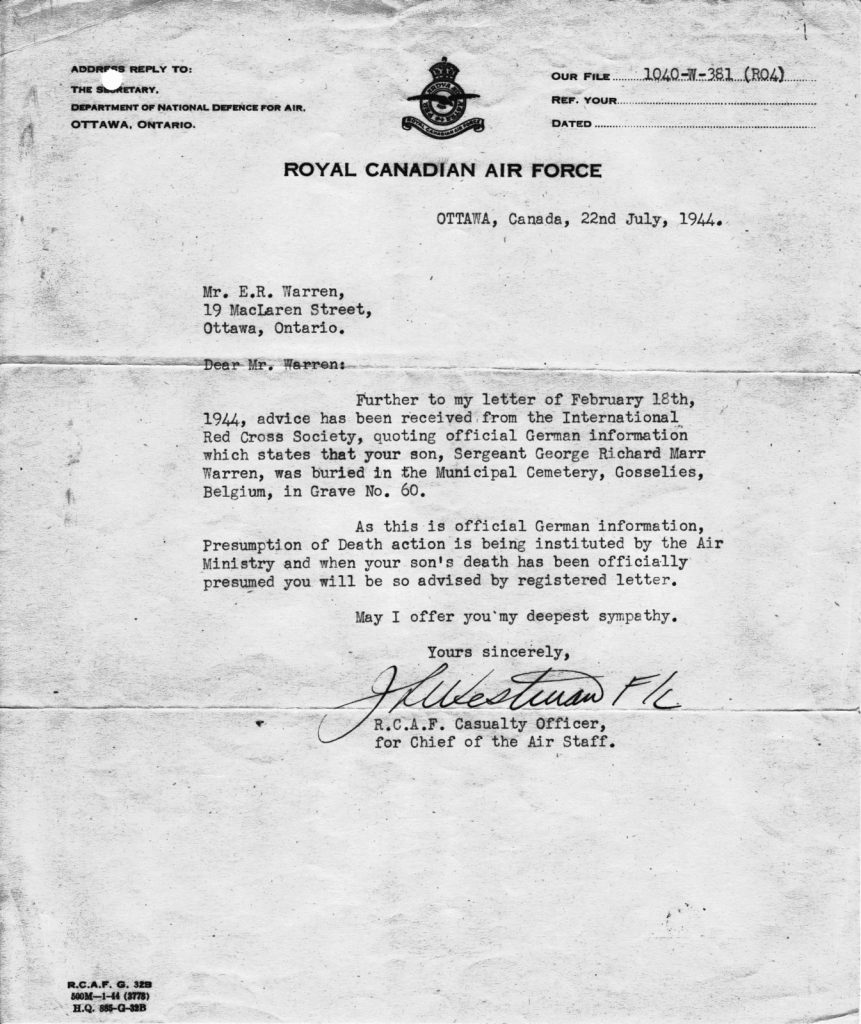

Traduit par Mr Edouard Renière / Translate by Mr Edouard Renière Website: Réseau Comète
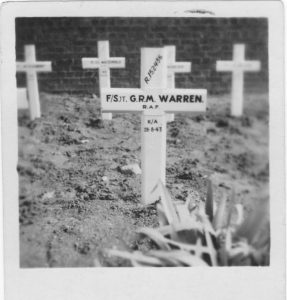


Forever Young
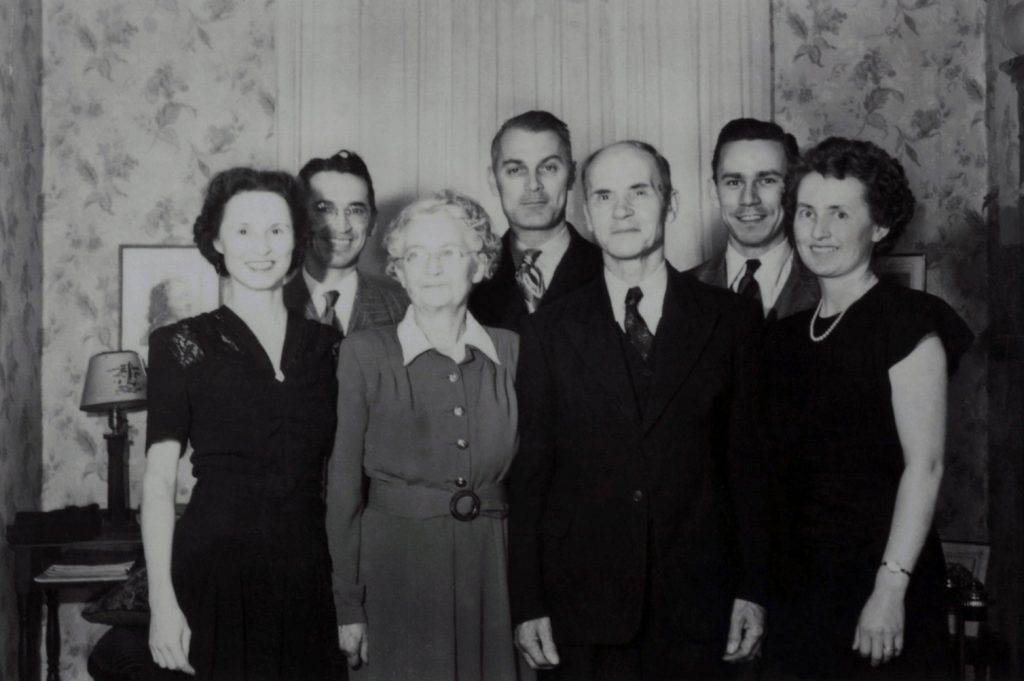
George Warren’s Family in Ottawa Post-WW2
Famille de George Warren à Ottawa après la 2ème guerre mondiale
L/R: Sister Dora, Brother Frank, Mother Florence (Marr), Brother Jack, Father Ernest, Brother Ted, Sister Winifred (‘Win’)
De gauche à droite: Dora (sa sœur), Frank (son frère), Florence Marr (sa mère), Jack (son frère), Ernest (son père), Ted (son frère), Winifred « win » (sa sœur)
